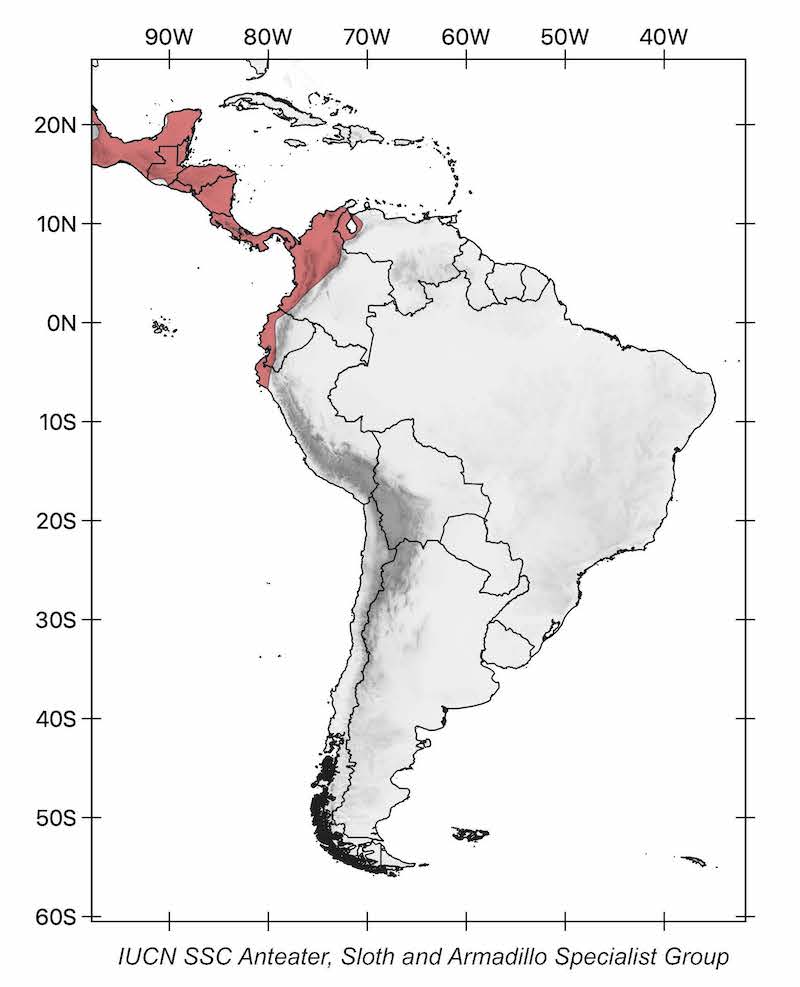Northern tamandua
(Tamandua mexicana)
other common names
Banded anteater
Ant bear
Taxonomy
Order: Pilosa
Family: Myrmecophagidae


description
This medium-sized anteater has a head-body length of ca. 56 cm, a tail of 40–67 cm, and a body weight of 3–6 kg. It is slightly smaller and has proportionally smaller ears than T. tetradactyla. The eyes and the toothless mouth are tiny. There are four claws on the forefeet; the second and third claw are well developed. Dense short hair covers the body, but the last three-quarters of the prehensile tail are naked. The most common coloration is tan with a black vest on back and sides, but uniformly tan individuals without vest also occur.

diet
This anteater feeds mainly on terrestrial and arboreal ants and termites, but it has also been observed consuming palm fruit. Northern tamanduas exploit 50–80 ant or termite nests and ingest around 9000 insects per day.

range
Tamandua mexicana ranges from southern Mexico in the north of its range, through Central America as far south as northwestern Peru and northwestern Venezuela.

curious facts
The tongue of northern tamanduas can measure up to 40 cm. Northern tamanduas walk on the sides of their hands, with the toes inward and distributing their weight on thickened tissue of the pad.

Population trend

threats
Habitat loss, roadkills, wildfires, and hunting are affecting this arboreal anteater, but the scope of these threats is unknown. In rural Ecuador, T. mexicana is persecuted due to the local belief that it attacks domestic dogs. It is used as a pet species in southern Mexico, and indigenous people may hunt it for food in some areas.

HaBITAT and ECOLOGy
Tamandua mexicana is found in tropical and subtropical dry and moist forest, including mixed deciduous and evergreen habitats. It can also be found in mangroves and grassland with some trees. It can survive in secondary forests and in disturbed habitats and can move, feed and rest on the ground and trees. This species is common in appropriate habitat. It is, however, considered uncommon in Ecuador. Population density estimates vary from 0.06 individuals per hectare in Costa Rica to 0.13 individuals per hectare in Panama. Its home range has been estimated at 25 hectares in Central America and Ecuador and 70 hectares in Panama. Its longevity is estimated to be 9.5 years.

reproduction
Breeding may occur at any time of the year. Gestation lasts 130–150 days, after which a single young is born, which is cared for by its mother for approximately 1 year.

conservation status
Tamandua mexicana is listed as Least Concern in view of its wide distribution, presumed large population, its occurrence in a number of protected areas, its tolerance of a degree of habitat modification, and because it is unlikely to be declining fast enough to qualify for listing in a threatened category.